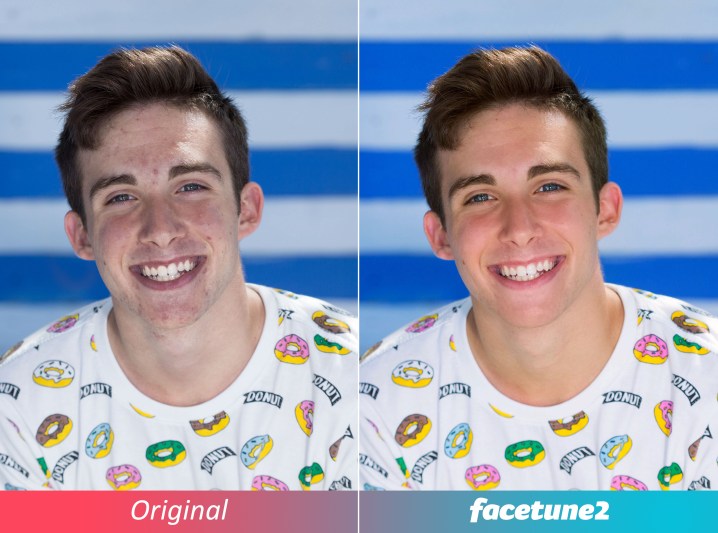
First and foremost among the new additions is its 3D facial-reshaping function. According to its developer Lightricks, FaceTune 2 uses artificial intelligence to scan your photo in order to understand how your features should be reshaped to fit naturally with the rest of your face. It’s like a plastic surgery app in your pocket. You can even use it to add a smile to the photos in which you’re otherwise looking way too serious.
Conveniently, Facetune 2 also introduces live preview tools to the mix, allowing you to check to see how its AR effects and filters look in real time. Whether you’re smoothing your skin, whitening your teeth, adding anti-glare, or fixing shadows, live preview lets you experiment with the app’s editing features before you save your selfie.

Last but not least, there’s “Relight,” a new feature that lets you strip the lighting from your original photo and re-illuminate it using AI. “Relight enables users to control lighting with the swipe of a finger when taking a photo in any environment, similar to the way conditions are controlled in a live studio,” claims Lightricks.
The FaceTune 2 app is free to download. However, it comes with limited features. Users can pay individually for its extras, but that could set you back more than $40. Instead, Lightricks is hoping people will fork out for a subscription at $1.99 per month, $6.99 for six months, and $9.99 for an entire year to unlock all the current and future functions.
“Consumers’ relationship with mobile apps has come a long way since we launched Facetune, and it has been such a popular app that we wanted to deliver an even more magical experience,” Said Zeev Farbman, co-founder and CEO of Lightricks. “We’re working with the most advanced image-processing technology and delivering it to consumers in an incredibly simple and easy-to-use interface.”
Editors' Recommendations
- Everything you need to know about the massive Apple App Store outage
- Is Temu legit? Everything you need to know about the shopping app
- Sunbird looks like the iMessage for Android app you’ve been waiting for
- You can finally move your WhatsApp chats from Android to iOS
- iOS 16 is a perfect excuse to bring 3D Touch back to iPhones


